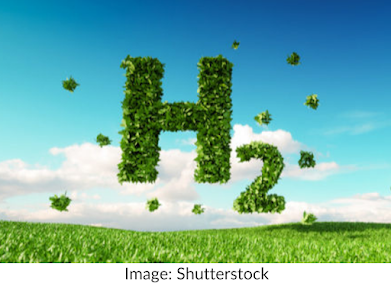Plastic Derived from Corn: PLA Bioplastic
This is terrifying, so what can be done? The first thing that came to mind was recycling plastic. I feel good about myself, always try to recycle whenever I can. Unfortunately for me, and I bet many others, only 9% of plastics are recycled. It is usually cheaper for plastic manufacturers to create a brand new plastic item rather than recycle a used one.
Recently viewing a short video of someone making plastic out of items that anyone can find at home inspired me to look into bioplastics. The woman in the video mixed cornstarch, glycerin, and vinegar (acetic acid), and heated it, and let the mixture dry for a few days.
I was shocked at how easy making this type of starch-based bioplastic is. Why hasn't this alternative to petroleum-based plastic become more widespread? Though bioplastics may seem like a new environmentally friendly phenomenon, they date back to over 100 years ago. Ford used starch-based bioplastics to produce parts of the very first cars!
This type of bioplastic is called polylactic acid plastic (PLA). PLA is made up of lactic acid, which is naturally produced through bacterial fermentation of dextrose, found in corn. In the US, corn-based PLA is most popular, though, around the world, items like sugar beets, cassava, sugar cane, potatoes, and wheat are also used to make it.
The words "degradable," "biodegradable," and "compostable" are often interchanged. However, when it comes to plastics and bioplastics, there are some significant differences. Firstly, all plastics are degradable, even petroleum-based. Degradable means that the plastic will break down into smaller and smaller pieces over hundreds of years. They never break down entirely, though, and will continue to expel harmful chemicals into the environment. Out of this stems the issue of microplastic being found everywhere. The term biodegradable has a positive environmental connotation. However, it only indicates that the plastic can be broken down much more quickly than degradable plastic. Microorganisms like bacteria and fungi are added to aid in decomposing the biodegradable plastic into its organic compounds like water, carbon dioxide, methane, and biomass, as well as inorganic compounds. Bioplastics are referred to as "durable" if they take an extended time to break down. Unfortunately, though these plastics break down quicker, like traditional plastic, they do not degrade completely.
 PLA plastic belongs to the compostable group of plastics. Compostable indicates that microorganisms can fully break down the material into biomass. This method is best for the environment, as it does not release any toxic compounds. The naturally occurring lactic acid-base of the PLA makes its decomposing process far less harmless than other bioplastics. Compostable plastics require specific conditions, including high oxygen and moisture levels, for microorganisms to break them down into compost; these ideal conditions are met at specialized composting facilities. Many consumers do not realize that their plastic item is compostable and throw it in with other plastics that end up in landfills, where there is very little oxygen, which will keep the compostable plastic from breaking down.
PLA plastic belongs to the compostable group of plastics. Compostable indicates that microorganisms can fully break down the material into biomass. This method is best for the environment, as it does not release any toxic compounds. The naturally occurring lactic acid-base of the PLA makes its decomposing process far less harmless than other bioplastics. Compostable plastics require specific conditions, including high oxygen and moisture levels, for microorganisms to break them down into compost; these ideal conditions are met at specialized composting facilities. Many consumers do not realize that their plastic item is compostable and throw it in with other plastics that end up in landfills, where there is very little oxygen, which will keep the compostable plastic from breaking down.PLA is a viable replacement for traditional plastics in regards to its other properties as well. Its properties are comparable to the positives of conventional plastics that allow them to revolutionize our world without the many environmental drawbacks. PLA also has the same appearance as regular plastic, which can be a positive and negative factor. It can be mistaken for regular plastic and therefore not disposed of properly. The material is strong and stiff, making it highly versatile. Its applications include single-use, disposable items like packaging, containers, straws, bags, bottles, non-disposable carpet, plastic piping, phone casings, 3D printing, and car insulation. Perhaps most notably, PLA has been used for medical purposes, like the production of implants and devices and smaller items like sutures, screws, and scaffolds. PLA also requires far less energy to produce and therefore can lead to decreased greenhouse gas emissions.
https://www.nationalgeographic.com/environment/article/plastic-pollution
https://news.climate.columbia.edu/2017/12/13/the-truth-about-bioplastics/#:~:text=PLA%20(polyactic%20acid)%20is%20typically,starch%2C%20protein%2C%20and%20fiber.
https://www.urthpact.com/bioplastics-basics/
https://www.sciencedirect.com/science/article/pii/B9780323461429000086
https://www.sciencedirect.com/science/article/pii/B9780128092613000036
https://www.burnside.sa.gov.au/files/assets/public/environment-amp-sustainability/waste-recycling-amp-composting/waste-collection/what-goes-in-which-bin/compostable-degradable-and-biodegradable-bags-fact-sheet.pdf
https://omnexus.specialchem.com/selection-guide/polylactide-pla-bioplastic
https://www.plasticsindustry.org/supply-chain/recycling-sustainability/bioplastics
file:///C:/chemmatters-april2010-bioplastics.pdf
https://www.tiktok.com/@chemicalkim/video/6954918887842450694







Comments
Post a Comment